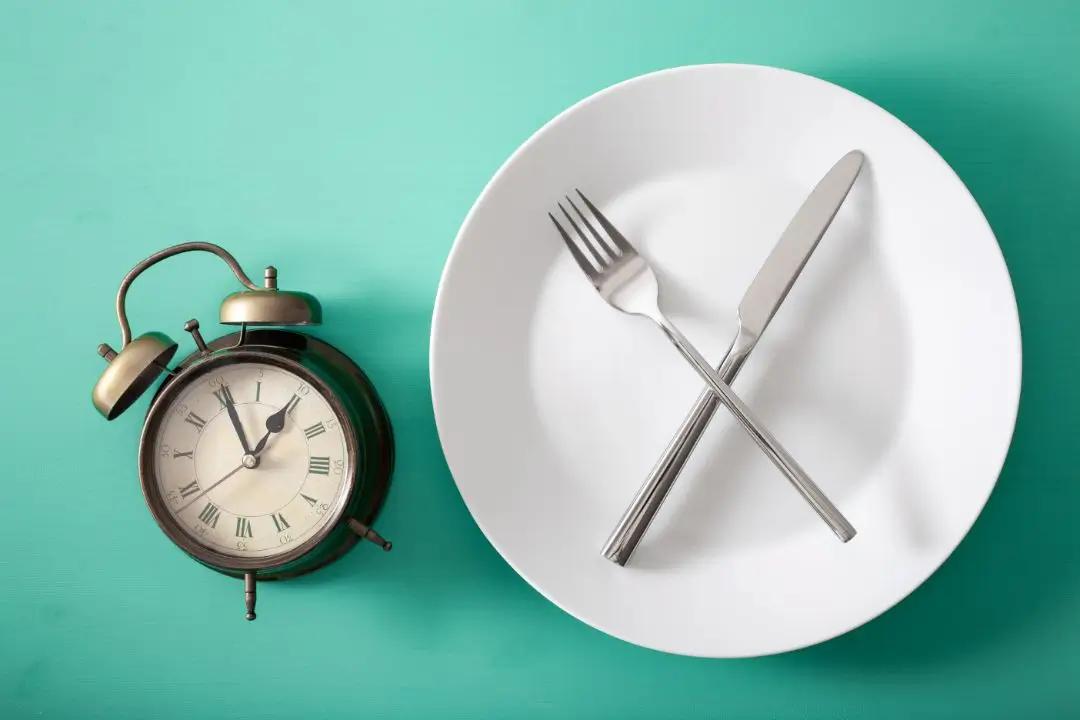If you're trying to lose weight and have watched YouTube videos from various fitness gurus and coaches, you may have heard the terms fasting and intermittent fasting being thrown around.
But what is fasting, and how can it benefit you in your fight to lose weight? In this beginner’s guide to intermittent fasting, we explain what fasting is, the best time to fast, and whether fasting can actually help you lose weight. We have a lot to talk about, so let’s dive in!
Jump to:
- What is Fasting?
- What is Intermittent Fasting?
- Types of Fasting: Find the Best Method for You
- Can Fasting Help You Lose Weight?
- How to Properly Fast for Maximum Benefits
- Understanding Fasting Hours and Timing
- Fasting vs. Regular Eating: How They Compare
- Conclusion
What is Fasting?

So, what is fasting? Basically, fasting is the practice of voluntarily abstaining from food for a set period. When you stop eating for a while, your body starts burning stored fat instead of sugar, which boosts metabolism and supports weight loss. Sounds great, right? But hold your horses!
It's extremely important to note that you should be careful with this method, as prolonged or extreme fasting can lead to issues such as dehydration, nutrient deficiencies, low blood sugar, and dizziness.
For some people—especially those with medical conditions like diabetes, low blood pressure, or eating disorders—fasting can be risky. That's why we want to highlight the importance of approaching fasting carefully, listening to your body, and ensuring you're still getting essential nutrients. Also, if you have any health conditions, be sure to consult a healthcare professional before attempting to fast.
What is Intermittent Fasting?
Intermittent fasting is an eating pattern where you cycle between periods of fasting and eating, usually on a daily or weekly schedule. This approach may help regulate metabolism, improve insulin sensitivity, and support fat burning by allowing the body to use stored energy more efficiently.
Another great aspect of intermittent fasting is that it can be easily incorporated into your routine, as there are several common formats you can try to see which one works best for you.
Types of Fasting: Find the Best Method for You

One Meal a Day (OMAD): The Extreme Form of Fasting
One of the simplest yet most extreme fasting methods is the one meal a day (OMAD) plan. As the name suggests, you eat only once in a 24-hour period. This method provides your body with extended fasting hours, allowing it to focus on repair and fat-burning instead of digestion. While OMAD offers benefits like enhanced mental clarity—for some—and weight loss, it's not for everyone as it requires discipline and proper nutrition to ensure you get enough essential nutrients in just one meal.
Just because you’ve fasted all day doesn’t mean you can go all out and eat everything in sight! Weight loss still depends on consuming fewer calories than your body burns. A safe and sustainable deficit is usually around 500–750 calories below your maintenance level, helping you lose weight at a steady pace while maintaining energy and proper nutrition.
Your daily calorie needs depend on factors like age, activity level, and metabolism. If you don't know your ideal calorie target, you can use a Basal Metabolic Rate (BMR) calculator and subtract a moderate amount for weight loss. However, it's important not to go too low, as extreme calorie deficits can lead to fatigue, muscle loss, and nutrient deficiencies.
16/8 Intermittent Fasting: The Most Popular Approach
The 16/8 intermittent fasting method is among the most sustainable and widely followed fasting techniques. It involves fasting for 16 hours and eating within an 8-hour window. This could mean skipping breakfast and having your first meal around noon, followed by dinner in the evening. The 16/8 fasting schedule is ideal for beginners because it aligns well with daily routines while allowing your body enough fasting hours to reap the benefits.
18/6 Intermittent Fasting: A Stricter Fasting Approach
The 18/6 intermittent fasting method is similar to 16/8, but with a longer fasting window. In this approach, you fast for 18 hours and eat within a 6-hour window. For example, you might start eating at 12 PM and have your last meal by 6 PM, then fast until noon the next day.
This extended fasting period allows the body more time to burn stored fat, regulate insulin levels, and potentially enhance cellular repair. Some find 18/6 fasting more effective for weight loss and metabolic health, but it can also be more challenging for beginners.
Can Fasting Help You Lose Weight?

One of the most asked questions is: Can fasting help you lose weight? The short answer: Yes, it can be an effective tool when combined with a balanced diet and lifestyle. Fasting may help regulate insulin levels and encourage the body to burn stored fat more efficiently. However, sustained weight loss depends on consistent healthy eating habits and overall calorie balance.
So, while fasting could help, it won’t magically shed those extra pounds you want to get rid of. Also, as we already emphasized, you must be extremely careful when fasting.
How to Properly Fast for Maximum Benefits
If you're wondering how to properly fast, it's essential to ease into it. Start with shorter fasting windows, stay hydrated, and consume nutrient-dense meals during eating periods. Avoid processed foods and focus on whole, high-quality ingredients to maximize fasting benefits. Additionally, listening to your body is crucial—fasting should feel sustainable, not like a punishment.
Understanding Fasting Hours and Timing
Your body's response to fasting depends on the duration of fasting hours and the timing of meals. Whether you're following intermittent fasting, OMAD, or alternate-day fasting, consistency is key. Adjusting your fasting window to match your lifestyle will make it easier to maintain in the long run.
Fasting vs. Regular Eating: How They Compare

As previously mentioned, fasting—especially intermittent fasting—can help regulate insulin levels and promote fat-burning. By extending periods without food, the body has more time to use stored fat for energy. However, fasting requires careful meal planning to prevent excessive hunger and overeating during eating windows.
On the other hand, regular eating with a structured routine and controlled calorie intake can also support effective weight loss. Eating smaller, balanced meals throughout the day helps maintain energy levels and supports muscle preservation. Additionally, this approach is often easier to sustain long-term compared to fasting.
Fasting vs. Regular Eating: Which Is Better for Fat Loss?
It depends on personal preference! Fasting can simplify meal planning and encourage fat burning, while regular eating supports steady energy levels and muscle maintenance. The key factor for weight loss in both methods is maintaining a calorie deficit—consuming fewer calories than your body burns.
So, regardless of whether you're fasting or eating regular meals, you must be in a caloric deficit—eating fewer calories than you burn—in order to lose weight. In other words, it all comes down to your personal preference and how your body feels.
Personally, I've tried both the One Meal a Day and 16/8 Intermittent Fasting methods and realized that I feel much better, and my mind is sharper when I eat regularly throughout the day.
Conclusion
Fasting and regular eating each offer unique benefits, but the most important factor in weight loss and overall health is maintaining a caloric deficit while prioritizing balanced nutrition. Whether you prefer intermittent fasting, structured meal plans, or a hybrid approach, the key is finding a system that suits your lifestyle, keeps you energized, and supports long-term success.
No single method works for everyone—so listen to your body, stay consistent, and make informed choices that align with your health goals. Sustainable habits always win over quick fixes!







